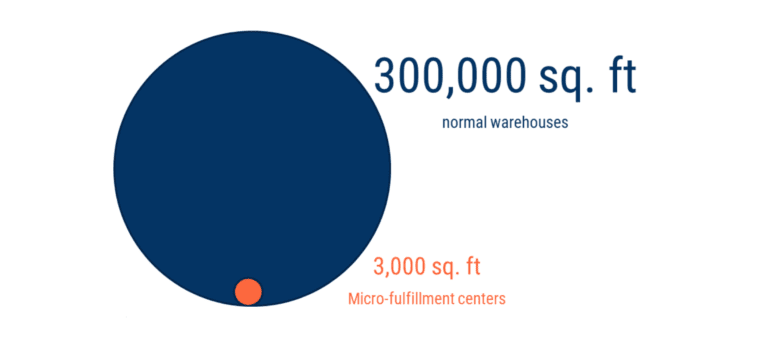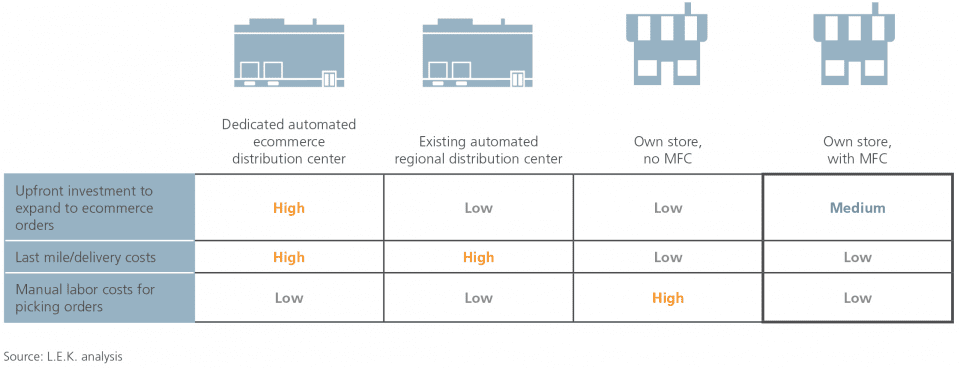Wouldn’t you agree when we say it is the surge in demand for delivery and pickup.
The new consumer landscape: Social distancing habits developed during the worldwide lockdown have now transformed into full-blown customer expectations and behaviour. All of it now boils down to ‘who can fulfil orders the quickest’.
Consumers now want to be able to receive their items as little as one hour after they place an online order; primarily, the luxury of one-day or two-day urban delivery scenarios can become a norm under the latest circumstances.
So, as the world is gearing to function as per the new-normal, retailers are in for skyrocketing sales, but they are also being faced with the pressure of rethinking their fulfilment strategies, if they want to keep playing strong, in the long run.
Why retailers should rethink their fulfilment strategy?
Simply because eCommerce stores have seen a humongous surge in their business orders over the past few months and it is time for brick-and-mortar retailers to step up and reclaim their piece of share.
This is where Micro Fulfilment Centers enter the landscape.
Micro-fulfilment is gaining traction across the retail industry and Brick-and-mortar stores can now use their stores for an easy pick-up location. Micro-fulfilment is a strategy that involves the use of highly automated storage facilities to reduce cost and the time of delivery. MFC’s offer these retailers the technology that delivers faster service for customers by reducing the distance between an ordered product and a customer, making last-mile delivery cheaper and quicker.
MFC’s are typically built into stores or stand-alone facilities and they typically range between 2,000 and 10,000 square feet of space. MFCs are much smaller than retail fulfilment centers and this means that they can be positioned within larger cities to ensure faster service to the growing population.

MFCs: An ideal setup for absolute retail success in and beyond 2020
It is time for urban brick-and-mortar retailers to leverage these store networks in order to seize the opportunity and fulfil online demand. They can rollout storage-shelf facilities in locations close to their end consumers. The enhanced automation with the means of robotic technology and smart software in these fulfilment centers is highly crucial in reducing labor and delivering an efficient omni-channel experience and operating model.
While dedicated fulfilment centres are the norm, these locations can also be edgy – we are talking designated shelf space in a local shop, derelict office blocks, or even accessible basements. Intriguing, right?
So, what does the process at MFCs look like?
- Products stored in totes, placed in compact vertical storage structures
- Totes picked up by robots that move in vertical or shuttle system
- Fastest moving items picked from the shelf area to avoid constant replenishment of the shuttle system
- Orders aggregated and delivered to the front of the store for customer puck-up/delivery
What MFCs aim to address?
The purpose served by MFCs is the simplification of the product path. To start with, the product is moved from the warehouse. And then, it makes way to the store’s backroom, finally heading to the store floor. To simply put, the product moves from the MFC to the store’s backroom, heading to the customer’s door.

It is all about making delivery times as short as possible and mode of delivery seamless and affordable. Not to mention, ease up the last-mile delivery.
Yet another extension of this opportunity for retailers lies in ‘Click and Collect’ mode where they can deliver to multiple locations rather than to one store along with all the investment and operating expense involved in “last mile” delivery. By creating such a facility for pick up and drop off, they can accommodate spikes in demand for delivery slots.
That’s not all. While this can drive more footfall to stores from new and existing customers, it can also be more benefitting as customers tend to make more impulse purchases when collecting orders.
Cost savings is on the table, too. While these micro fulfilment centers are close to the end consumer, the potential savings in delivery fees are a fraction of the incremental costs of operating it.
A very apt example is the grocery retail sector that is now investing heavily into boosting their online capacity and delivery slots. A noticeable online grocery Supermarket, Woolworths has announced that group e-commerce sales jumped by 87% to AU$1.5 billion during the first quarter of 2021 financial year. By placing their trust in the micro-fulfilment technology for their e-store, the business has been successfully delivering unparalleled speed and accuracy in the online picking process while keeping close to their customers for faster and more flexible deliveries to the home.
Organizations are going big to tap into the entire micro-fulfilment concept. US mobility and urban logistics hubs operator Reef Technology has secured $700m funding to help realize its goal of transforming urban centers into “15-minute cities”. They are aggressively working on the concept of neighborhoods where everything residents need can be found within a short walk or cycle ride from their homes.
The entire concept and function of MFCs is based on the immediate competency of retailers to integrate all of their assets to satisfy those using the omnichannel. When retailers realize that their stores can also be used as micro-fulfilment centers, they can gear up for consumers and offer them a 360-degree experience, seamlessly delivering the benefits of omnichannel service.
